3 Ways Stress Impacts the Brain | Cognitive FX
Oxford Dictionaries defines stress as “a state of mental or emotional strain or tension resulting from adverse or very demanding circumstances.” Everyone is very familiar with experiencing stressful...
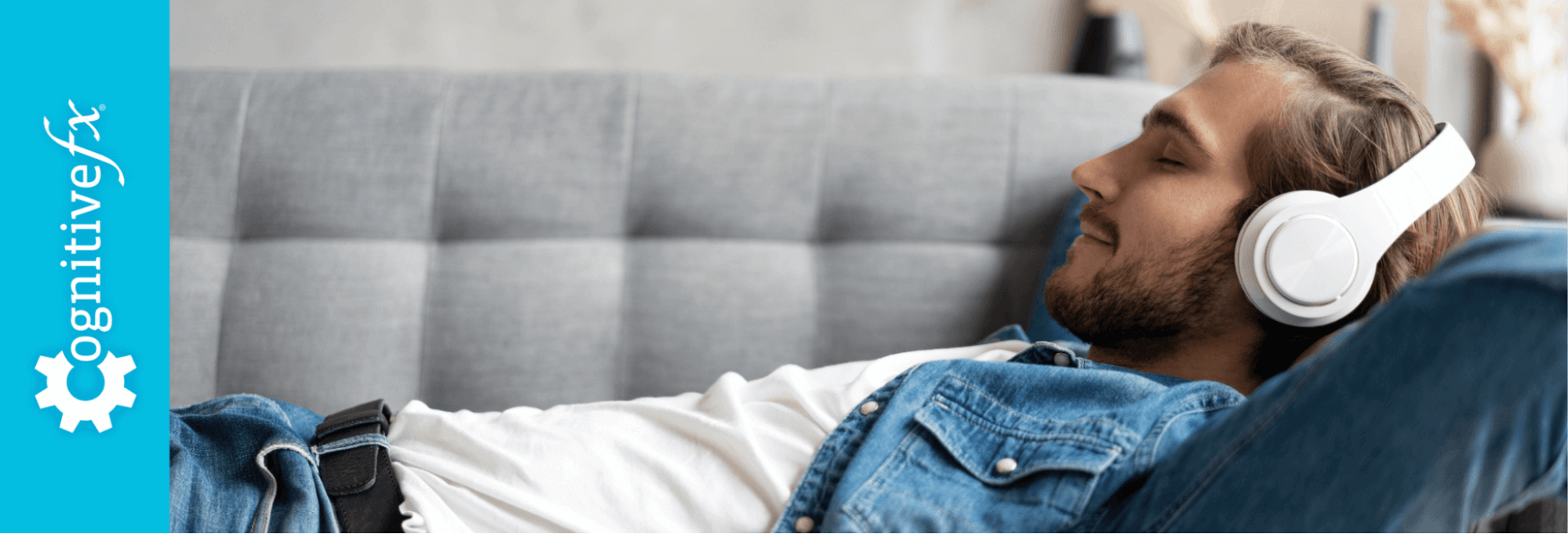
Have you ever gotten stuck in a task, set it aside for a while, and then discovered that it somehow seemed easy when you came back to it? If so, you’ve experienced the power of strategic breaks to re-energize your brain. If you’re recovering from a traumatic brain injury, these breaks play a vital role in revitalizing your brain throughout the day.
Think of your brain as a battery that needs charging. Under normal circumstances, the brain has enough charge to be functional all day, and then it recharges while you sleep overnight. However, for patients who have been dealing with lingering symptoms of a concussion for months or even years — a condition known as post-concussion syndrome (PCS) — this process may not work like it’s supposed to.
The best approach for these patients is to have therapeutic rest periods when symptoms flare up, or even better, before they are actually forced to stop an activity due to fatigue. Good therapeutic breaks can help lessen stress and fatigue and have a positive impact on mood. (Find out more about therapeutic breaks later in the article.)
For PCS patients, frequent breaks have an added bonus: They activate the parasympathetic nervous system. The Autonomic Nervous System (ANS) is divided into two sections: the sympathetic nervous system (the “fight or flight” system) and the parasympathetic nervous system (the “rest and digest” system), which work together amicably under normal circumstances.
However, after a traumatic brain injury (TBI), the ANS often gets stuck in “fight or flight” mode. Frequent periods of rest throughout the day counteract this sympathetic dominance and allow the gentler parasympathetic system to take over, even if only for a brief moment.
In this article, we’ll explain why frequent periods of mental rest throughout the day are vital for concussion recovery and also offer practical advice about how much rest you need and how to spot when you need a break. We answer...
If you have lingering symptoms from a concussion, you’re not alone. As many as 30% of concussion patients do not recover without treatment. 95% of our patients experience statistically verified restoration of brain function after natural therapy at our clinic. To learn if you’re eligible for the program, schedule a consultation.
Note: Any data relating to brain function mentioned in this post is from our first generation fNCI scans. Gen 1 scans compared activation in various regions of the brain with a control database of healthy brains. Our clinic is now rolling out second-generation fNCI which looks both at the activation of individual brain regions and at the connections between brain regions. Results are interpreted and reported differently for Gen 2 than for Gen 1; reports will not look the same if you come into the clinic for treatment.

Before we start, it’s important to make a distinction. When we talk about letting the brain rest after an injury, we are not talking about the process of cocooning, in which patients are advised by their health care provider to rest in a dark room, avoiding all forms of brain stimulation and physical exertion until symptoms subside. In the past, this was accepted as best practice to treat patients with a brain injury, but in recent years, researchers have found that full rest beyond a few days after a concussion is not beneficial, and may actually prolong recovery time.
This is because if you effectively ‘switch off’ your brain by not using it, it will be much harder to switch it back on. In addition, every time you try to do something afterwards, symptoms like headaches and light sensitivity could get worse. You may even develop new symptoms. Your brain might struggle with even simple tasks.
As you can probably tell, we would never recommend cocooning. Instead, we recommend that patients suffering from post-concussion syndrome (PCS) take frequent short breaks throughout the day to allow their brain to recharge. For these patients, short breaks refresh the mind, ease stress and exhaustion, and improve cognitive skills.

A break can be described as a brief pause from an activity. These breaks don’t have to be specific amounts of time to be beneficial for PCS patients. An effective break may only require a few seconds! It’s not how long the break lasts, it’s what you do during the breaks that matters.
To be considered a therapeutic break — one which benefits your injured brain — you must change the part of the brain that you’re using. For example, concentrating on work relies heavily on an area of the brain called the prefrontal cortex. This area keeps you focused and is responsible for logical thinking and executive function.
Ideally, a break will give this area a rest by switching brain activity to another area. In other words, you need to do something that doesn’t rely heavily on prefrontal cortex function. This could be, for example, closing your eyes and allowing yourself to daydream or listen to music. If you were working at the computer, you need to do something away from the screen. If you were doing physical work, you need to do something calming and relaxing. The key is always to change the type of cognitive activities your brain is doing.
Playing computer or video games is a common form of entertainment for many people. If you were just doing chores for a few hours, it might seem like a good break. But computer games activate many regions of your brain and put strain on your eyes, meaning they are not a good choice if your goal is to rest your brain. In general, screen time is not restful for your brain. That’s not to say you can never play a video game or relax in front of a good TV show; it just means you need other restful activities for your brain besides those.
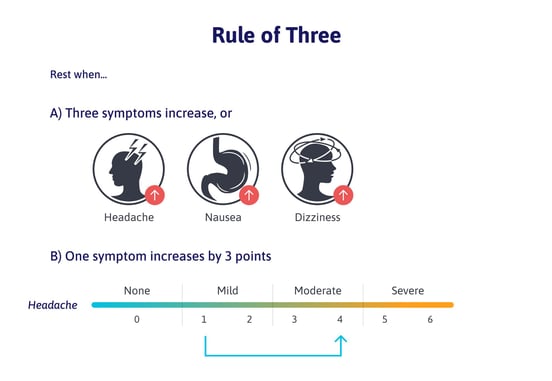 As a general rule, if you notice your symptoms getting worse, then you need a break. It’s important to listen to your body. Ignoring your symptoms and trying to “tough it out” will just make it worse.
As a general rule, if you notice your symptoms getting worse, then you need a break. It’s important to listen to your body. Ignoring your symptoms and trying to “tough it out” will just make it worse.
If you’re not sure whether you need a break, use the rule of three. If you’ve noticed that three symptoms have started or are worsening, then it’s time for a break. For example, if your headache is increasing, you feel anxious, and then you start to experience drowsiness or balance problems, close your eyes and relax for a few minutes.
Likewise, if a single symptom is deteriorating quickly, then it’s a sign that you need a break. For example, if your headache has steadily gone from what you’d rate as a 1 (mild) to a 4 (severe), go for a short walk away from what you were doing.
On the other hand, you don’t have to take a break every time you experience common symptoms. If you’re just feeling slightly nauseated but can maintain your activity, don’t stop. This helps the brain heal and will actually help reduce other symptoms in the future.
The 20-20-20 rule is another practical guideline to remind you it’s time for a break. This is particularly useful when you have to spend a long time in front of a computer, which puts a lot of strain on your eyes. The rule is simple: Every 20 minutes, look at something that is 20 feet away for 20 seconds. You don’t have to be exact with the distance; the idea is to focus on something that is far away from you. Consider looking out a window or walking outdoors into a larger area. Set a reminder on your phone, or use the free Eye Care 20 20 20 app that can alert you when it’s time to rest.

Even if you can manage a full day’s work without triggering any concussion symptoms, it’s still a good idea to take regular breaks. In this case, set hourly reminders on your phone to alert yourself that you need a break. Force yourself to stop when your phone beeps, even if you’re tempted to continue working to finish something. You’ll actually be more efficient after a break. It may be hard to get into the habit at first, but stick with it and it will get easier.
If you are trying a new activity, you may need more breaks than usual until you get used to it. For example, if you’re going out for the first time after your injury, it’s best to go to a quiet place like a coffee shop. Make sure you’ll have access to a quiet getaway, like a bathroom, where you can spend a few minutes if symptoms become overwhelming. The more you do it, the easier it gets. Then you can move on to the next activity — like shopping in a busy area — and start the process all over again.
Note: If you experience a symptom that seems to get worse no matter what you do, seek medical advice. It’s important to consult a medical professional who can make sure you don’t have any other medical problems contributing to your condition.

A good break does not necessarily mean doing nothing. As described earlier, you have to change the cognitive skills being used. Below are some examples of good breaks throughout your day:
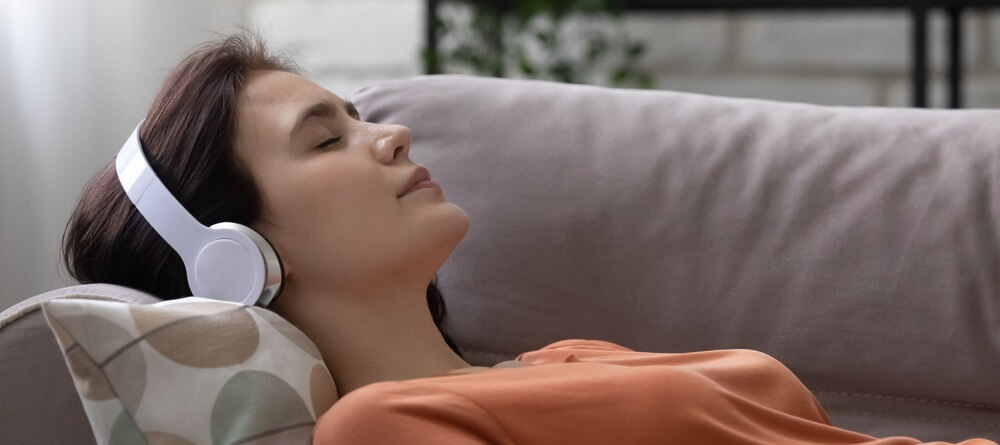
At Cognitive FX, we believe short periods of cognitive and physical rest are an essential part of therapy — so much so that they’re an integral part of our rehabilitation approach.
Our therapy follows a three-part cycle:
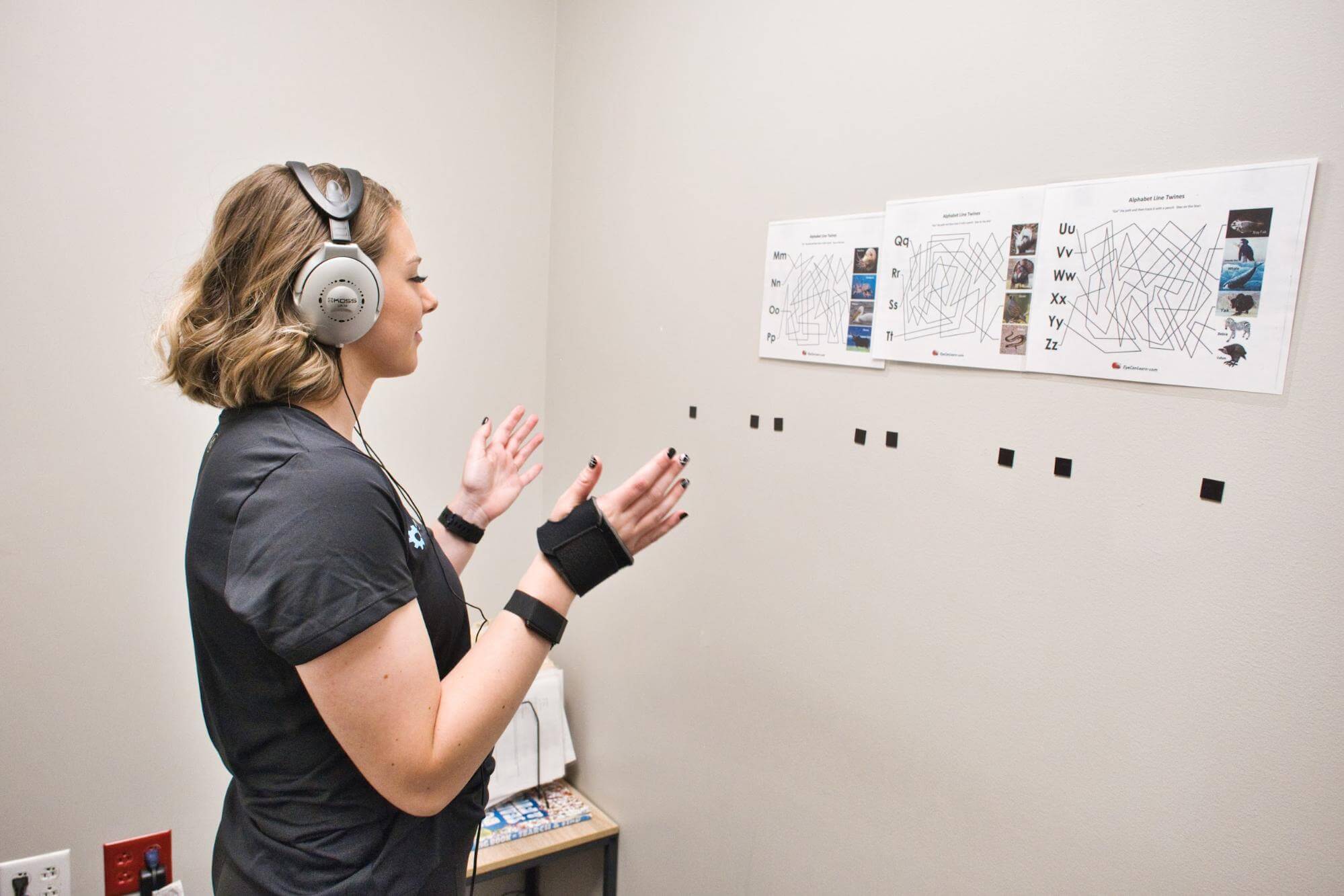
Treatment at Cognitive FX starts with a functional neurocognitive imaging scan (fNCI) to find out which regions of your brain were affected by your injury and how.
The scan highlights which areas are hypoactive (not doing as much as they should) or hyperactive (either compensating for the underperforming regions or using more resources to do simple tasks).
This disparity is responsible for many of the post-concussion symptoms you face. Identifying those injured brain regions gives our therapists all the information they need to design a treatment plan customized to your personal brain needs, called Enhanced Performance in Cognition (EPIC) Treatment.
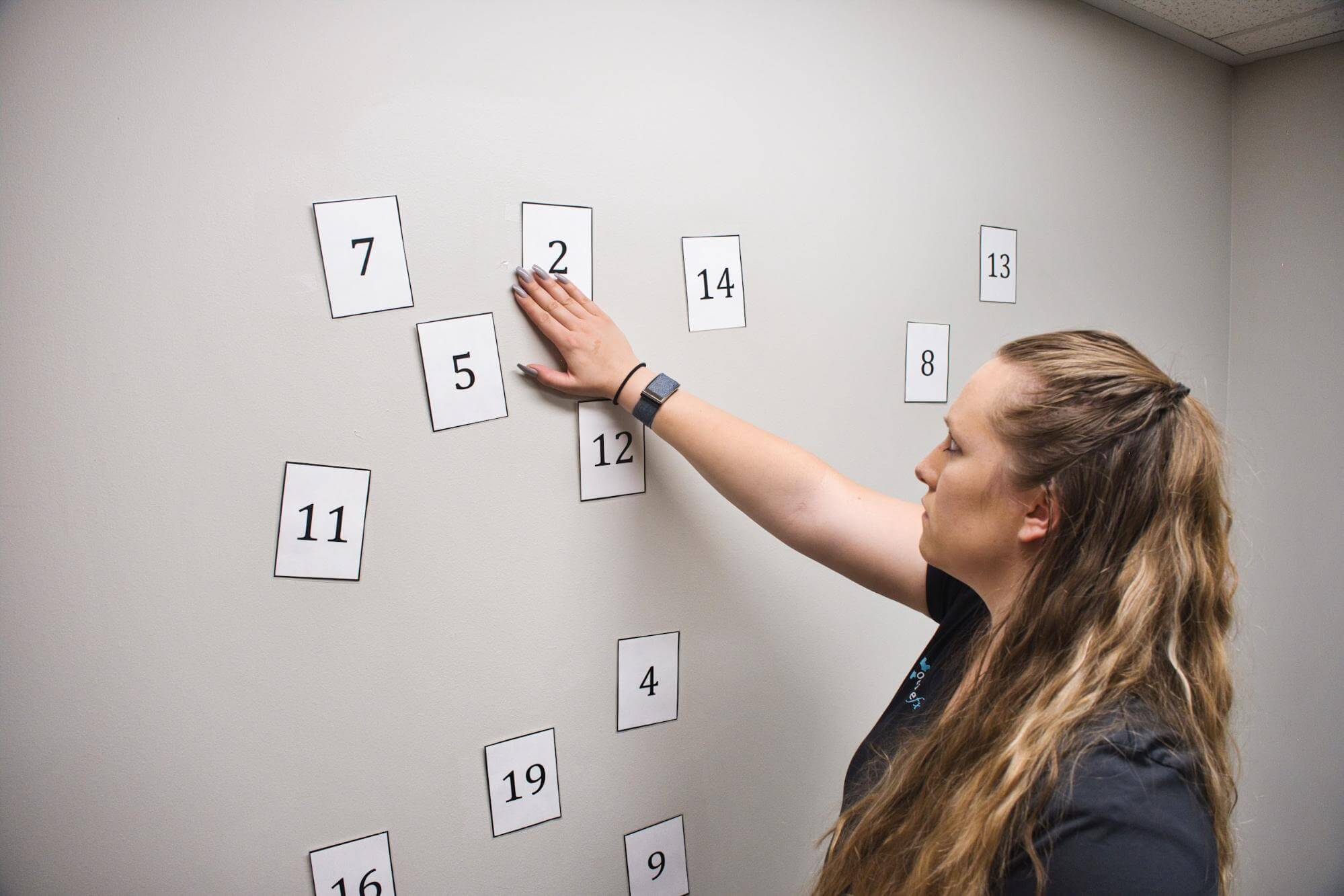
Treatment for post-concussion syndrome typically includes:
After treatment, you’ll go through a second fNCI scan to assess your progress. 95% of our patients show statistically significant improvements by the end of their EPIC treatment and continue to improve further afterwards.
One of the best ways to rest your brain and encourage a healthier autonomic nervous system is by controlled breathing and mindfulness techniques.
At our clinic, we will teach you a breathing pattern you can use to help reduce symptoms after physical exercise, calm down when you’re stressed or feeling panic levels, or make other therapies more effective. Research has shown improved respiratory function and overall well being in TBI patients who practice intentional breathing patterns several times a week. This is because breathing, emotion, and cognition are all closely linked.
We’ll also teach you a mindfulness meditation that you can continue doing when you get home. Mindfulness practices can combat stress and mental fatigue after a brain injury, making it especially useful in recovery from post-concussion syndrome. In addition, research has shown significant reduction in depression with mindfulness practice.
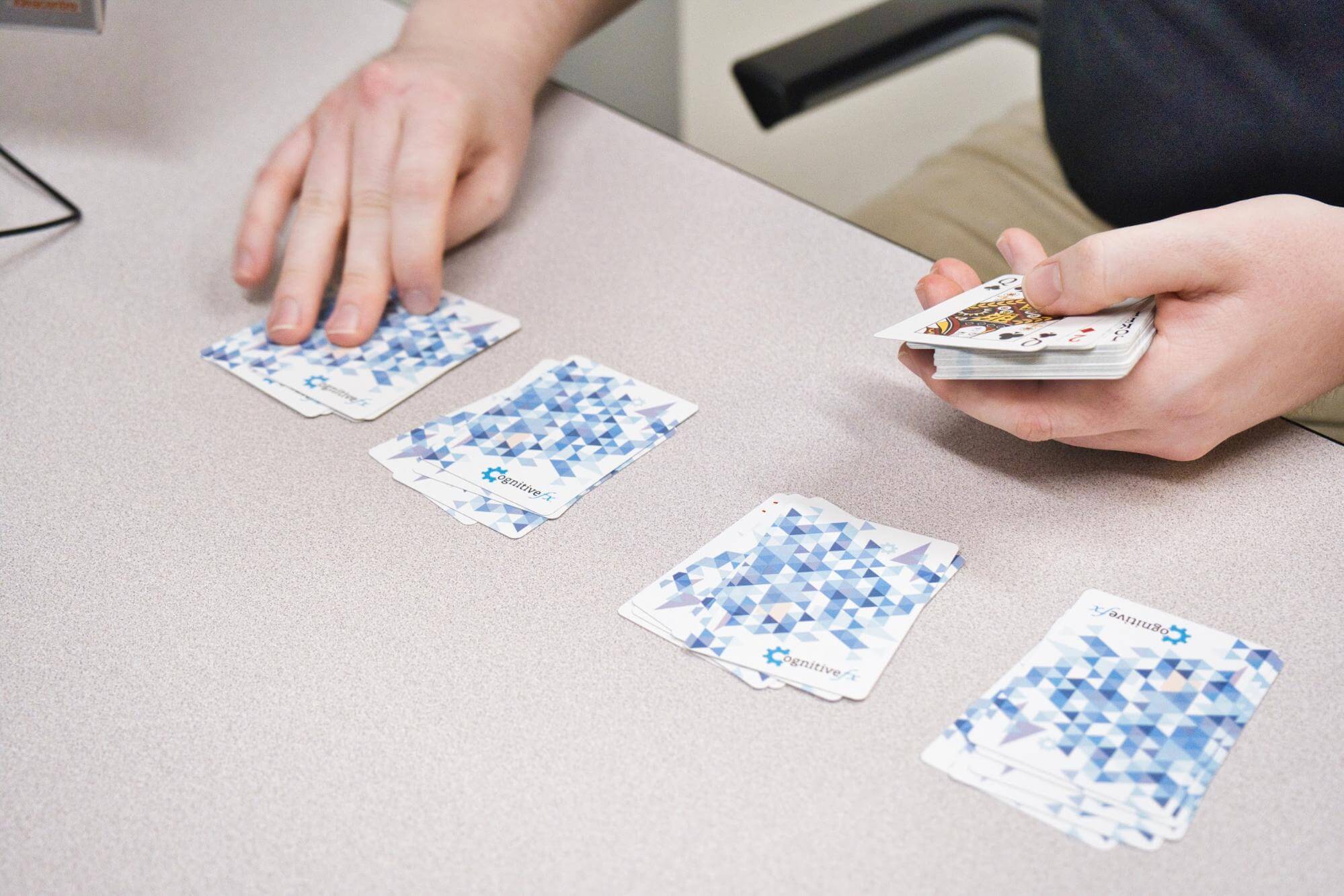
Every patient gets “homework” from our therapists at the end of treatment that helps them to continue improving at home. Each homework set includes cardio exercise, cognitive work, and a period of rest. Many patients try to skip the period of rest to save time, but it’s a key part of recovery. Don’t skip it.
Once you’ve done a few sessions at home, you can start to adjust your homework to your needs. If your job involves reading all day, you can skip mental activities that involve reading and try different exercises, such as playing word games with a family member. It’s better not to overdo it with one part of your brain.
This is also the best approach to transition back to your normal life. As you recover from a brain injury, you can slowly reduce the amount of homework you do, but in such a way that you’re prepared to deal with real-life situations.
Some patients focus too much on completing our exercises and shy away from real-life situations, while others rush back to their pre-injury activity levels straight away. Neither of these approaches is ideal; the trick is a gradual change.
For example, if you weren’t able to work due to your injury, start working part-time, or volunteer at a charity. This will get you out of the house for a few hours, but you can still rely on the homework exercises to continue your recovery from concussion.

Don’t feel discouraged or disappointed if you need a break from your normal activities. Your brain is healing and it needs a little extra help to get there. Taking frequent breaks is part of the recovery process, and it will help you more in the long run than forcing yourself to continue working.
If you have lingering symptoms from a concussion, you’re not alone. As many as 30% of concussion patients do not recover without treatment. 95% of our patients experience statistically verified restoration of brain function after natural therapy at our clinic. To learn if you’re eligible for the program, schedule a consultation.

Kathryn ‘Kaydee’ Severs is a Registered Nurse. She started her nursing career serving in the US Army Reserves as a combat medic. During her time in the Army she was certified as a Emergency Medical Technician and a Licensed Practice Nurse. Kaydee worked as an LPN in California, Utah, and Colorado and continued her serve her country in the Army Reserve. In 2005 she was deployed to Germany to work in the ICU at Landstuhl Regional Medial Center. This is where she met her husband Eric. He was active duty in the Air Force. Since then they have been stationed in Colorado, Utah, and Mississippi. Eric went on two more deployments and Kaydee continued her schooling to receive her RN. Their greatest achievement are their four amazing children. As an RN Kaydee has worked as an ER nurse in Colorado Springs and at the University of Utah. In Mississippi she worked as a pediatric nurse for medically fragile children. Kaydee is excited to be a part of the health care team at Cognitive FX. She has had many friends and family who have suffered from TBI’s and it pained her knowing she couldn’t ease their symptoms. This amazing program and the staff have given her the tools and training to help do just that!

Oxford Dictionaries defines stress as “a state of mental or emotional strain or tension resulting from adverse or very demanding circumstances.” Everyone is very familiar with experiencing stressful...
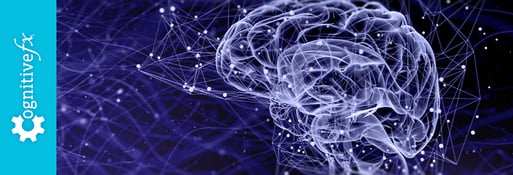
The brain loves taking the path of least resistance. This is true for blood flow and also for sending the communication signals in the brain when neurons are firing. Even a simple task requires...